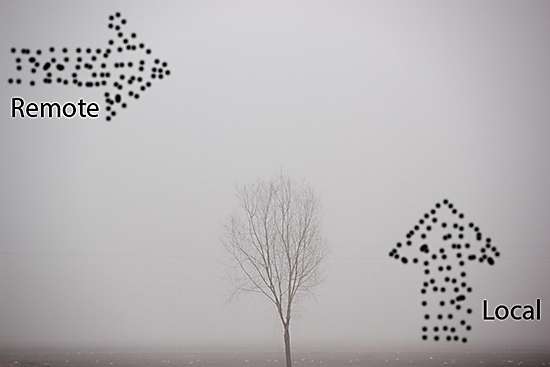Unique model tagging technique identifies soot's pollution source over China

Coating chimney flues and diesel exhaust pipes, black carbon leaves a sooty footprint on Earth. But how to track its travel through the atmosphere?
Scientists at Pacific Northwest National Laboratory developed a unique computational tagging technique to detect the influence of local vs. non-local sources of soot on China's regional air quality. They used this technique to determine how much each soot source—local or remote—contributed to atmospheric warming over China. Atmospheric Chemistry and Physics published the research.
When wood or coal is burned, soot is one of the by-products. Though soot particles can be fine and powdery, they can have a large effect on the environment. Local and non-local sources of soot have different influences on radiative forcing—changing the Earth's energy balance—in its destination region. In China, for example, air quality is poor because of an increase in tiny atmospheric particles from rapid urban and economic growth in recent years. When more cars hit the road or people use more appliances (powered by coal-generated electricity), more of these particles are released into the atmosphere. Scientists have long wondered just how much influence these particles from one region have on the air quality of neighboring areas.
Reducing soot in the atmosphere is likely to improve atmospheric warming changes and regional air quality. Previous studies found that home heating and industry contribute the most soot over China. However, an effective program to reduce soot impacts in a particular region requires knowing the source of the soot—whether it is from within the region, or imported from another area.
PNNL researchers used the Community Earth System Model to simulate a representation of atmospheric aerosol particles and determine the source attribution of black carbon, a.k.a. soot, and its direct radiative forcing (contributing to atmospheric heating) over China. Researchers equipped the model with a black carbon source-tagging technique, through which they can track soot particles emitted from various source regions and/or sectors. Scientists also entered new data sets for the most recent years that were available.
In regions of China with strong black carbon emissions—for example, the north, south, and northeast—researchers found that local sources predominantly contributed to near-surface black carbon concentrations. Scientists also discovered that non-local sources more strongly influenced black carbon over central and western China. During the winter haze season, more than 50 percent of near-surface black carbon in China originated from pollution in north China, which contributed more than 90 percent to local black carbon and a substantial amount to south, southwest, and central-west China. Overall, local sources accounted for 65 percent of black carbon's atmospheric heating over China, while outside sources contributed 35 percent.
The study also showed that China's soot doesn't stay within its borders. Air pollution from China, via transport over the Pacific Ocean, accounted for 8 percent of black carbon concentration and 29 percent of the total air column load of black carbon in the Western United States in spring.
The research team has developed a source-tagging technique for atmospheric sulfate particles, also components of pollution that affect radiative heating and cooling in the atmosphere. Researchers will use the technique to understand global sulfate's source attributions and its effect on atmospheric warming and cooling.
More information: Yang Yang et al. Source attribution of black carbon and its direct radiative forcing in China, Atmospheric Chemistry and Physics (2017). DOI: 10.5194/acp-17-4319-2017
Journal information: Atmospheric Chemistry and Physics
Provided by Pacific Northwest National Laboratory




















